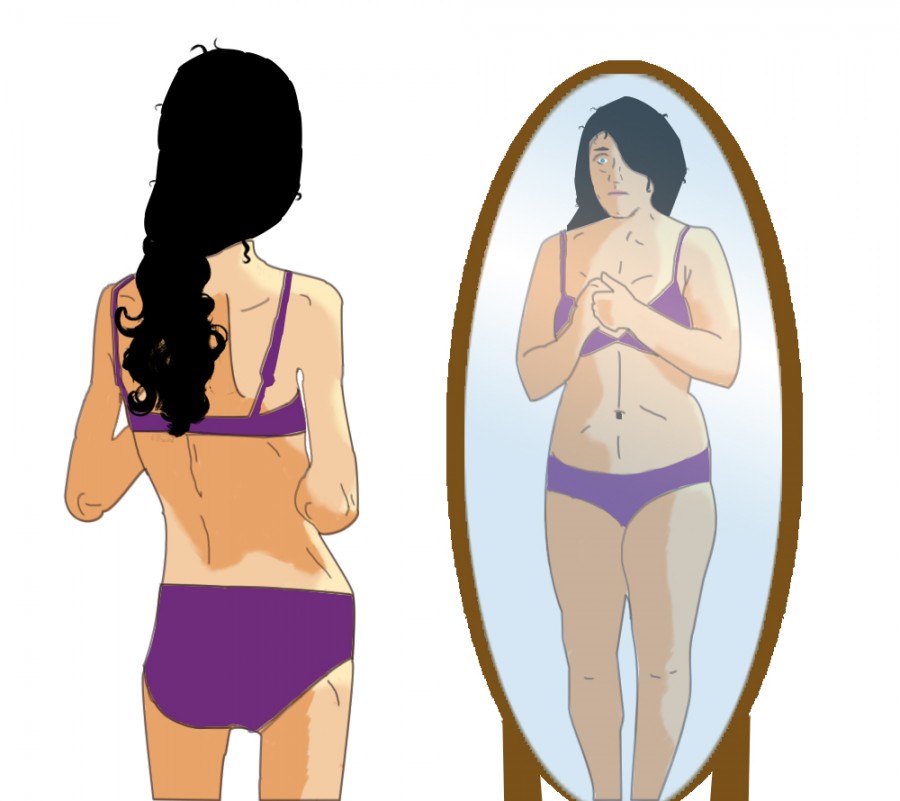Pretty Does Hurt
March 9, 2016
What do you think when you see the unaltered version of yourself in the mirror?
For some of us, we constantly criticize our looks until we can no longer feel comfortable in our bodies and just focus on what’s lacking. The image we have of ourselves becomes warped, infecting our health and minds.
There’s a constant need to seek approval and advice from family, friends, and strangers, and insecurities creep out when you hear something you don’t like.
We live in a nation where 80 percent of women are dissatisfied with their bodies according to Psych Central Professional, and want the “supermodel” body. The media doesn’t like to acknowledge the issue, and generally refuses to change the unhealthy trends.
A survey in 2012 by Model Alliance revealed that 31 percent of models suffer from eating disorders and 64 percent have been asked by their agencies to lose weight to become “ideal.”
NYC Girl’s Project conducted a survey in 2010 that found out that 60 percent of girls compare themselves to models and media images.
NYC Girl’s Project also reported that 81 percent of girls want to see real pictures of untouched women in magazines and advertisements. However, the devastating truth is that 31 percent of girls are also starving themselves to conform to the “perfection” of the models or celebrities they look up to.
Linda Bacon, a professor at City College of San Francisco, associate nutritionist at the University of California at Davis, and author of many books concerning nutrition said, “The popular media presents us with many images of white, able-bodied, slender bodies, and doesn’t accurately represent the larger diversity of what female bodies really look like.”
“Women are taught that looks are their currency. And there is some truth in that: The more you resemble the culturally promoted beauty ideal, the better you get treated in the world, socially in terms of work. It makes sense to want that power,” said Bacon. “That said, I’d rather us invest our time and energy in changing the culture, rather than buying into and perpetuating harmful values.”
Woman strive for the “perfect body” and it’s not a recent development. The desire for thigh gaps and prominent collar bones are more present than ever. This “ideal figure” started in the twentieth century when Farrah Fawcett came in the 1970s and Kate Moss’ thin frame inspired the 1990s fashion world.
Social media feeds into our constant need to compare our pictures to women we’re jealous of. We hide behind filters, makeup, and sometimes Photoshopped images, which can cause emotional damage. Social media eats at our minds and has created a generation that obsesses over how to get the perfect butt or what their favorite celebrity ate for lunch — or didn’t eat.
“I think the more models we have fighting these images, from parents telling their little girls how strong and smart they are more than how pretty they are, to more magazines like Sports Illustrated cover generated, you see how really far we have to go,” said Teresa Fournier, professor at Diablo Valley College. “Wouldn’t it be nice if “Plus” wasn’t a size but “healthy” was? And that different size bodies on covers did not make news?”
“I’d encourage everyone to focus on life, recognizing that appearance is just one aspect of who we are, and a superficial one at that,” said Bacon. “There is so much more that is important in life. And to not buy in to a culture that tells us otherwise.”






































































